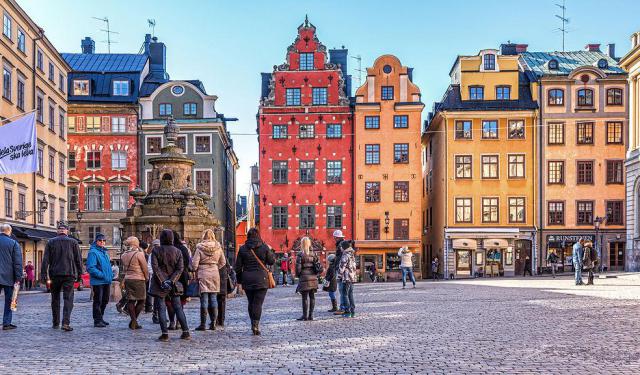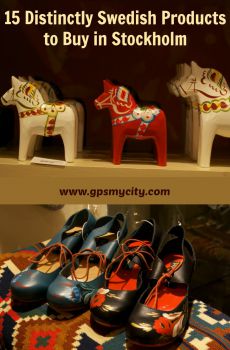
Souvenir Shopping Guide: 15 Distinctly Swedish Products to Buy in Stockholm
1. Silver Crafts - Chunky, Bold and Minimalistic
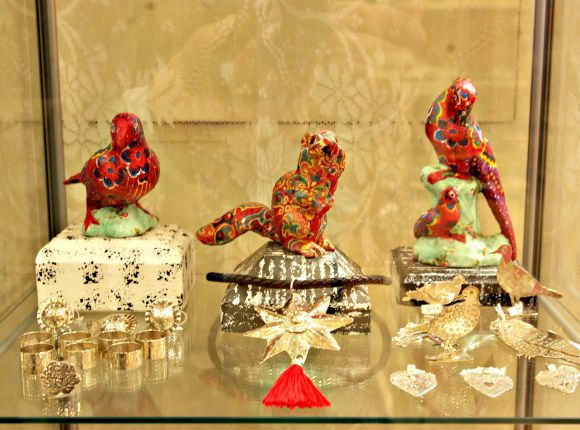
Silver is a very traditional metal for Sweden, produced here for centuries in the world-famous "Sala Silver Mine", once the largest source of income for the national economy and, as such, vigilantly guarded by The Crown. Thousands of people made their living in the mining industry. Four hundred years of Swedish silver production rendered this metal fairly inexpensive and affordable material for craftsmanship, jewelry-making and silversmithing.
The latter art is historically rooted in Sweden; there are internationally established hallmarks attesting to the silver quality and grade, along with individual trademarks of silversmiths and design companies.
Nutida Svenskt Silver
Havregatan 12
118 59 Stockholm
http://www.nutida.nu/
Exclusive, trendy and expensive designer silver jewelry can be found at Efva Attling, Concept Store:
Prices range from high to extremely high, from 100 EUR to 10 000 EUR
Efva Attling
Biblioteksgatan 14111 46 Stockholm
Telephone: +46 -8- 611 90 80
Opening hours: Monday-Friday: 10 am - 6 pm; Saturday: 11 am - 4 pm
http://www.efvaattling.com/
2. Swedish Handmade Clogs - Making Your Feet Dance
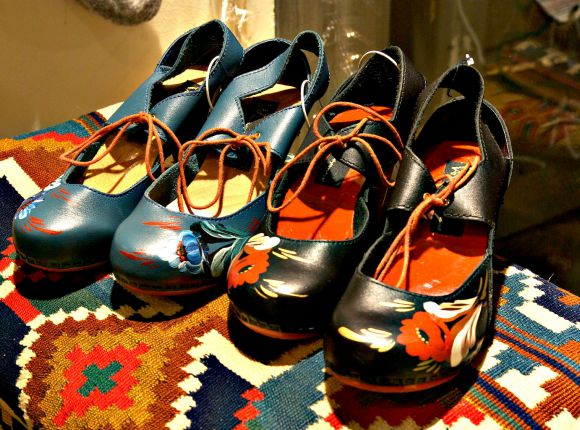
Typical Swedish clogs aren't fully made of wood, as opposed to their Dutch counterparts, but have a leather top with a small strap and a heavy, curved wooden cube bottom. In the 1970s, clogs became fashionable again and today they enjoy major come-back, re-designed to contemporary styles by new fashion gurus. The young and trendy fashion label "Swedish Hasbeens" specializes in retro, vividly-colored clogs that have received massive attention from the fashion world in both Europe and the U.S.
You can find traditionally hand made clogs in many shades of natural leather in this renowned craftsman shop:
KNULP (City)
Kungsgatan 53, Stockholm
Opening hours: Monday - Friday: 11 am - 6 pm;
Saturday: 11 am - 4 pm
Telephone +46 - 8- 21 07 69
http://www.knulp.se/knulp.html
The 'Swedish Hasbeens' trendy and colorful shoes can be found at:
Grandpa Stockholm
Södermannagatan 21
+46-8-643 60 80
Opening hours: Monday - Friday: 11 am - 6 pm;
Saturday: 11 am - 5 pm; Sunday: 12 pm - 4 pm
http://www.swedishhasbeens.com/index.php
3. Carved Wooden Utensils - Kitchen and Table
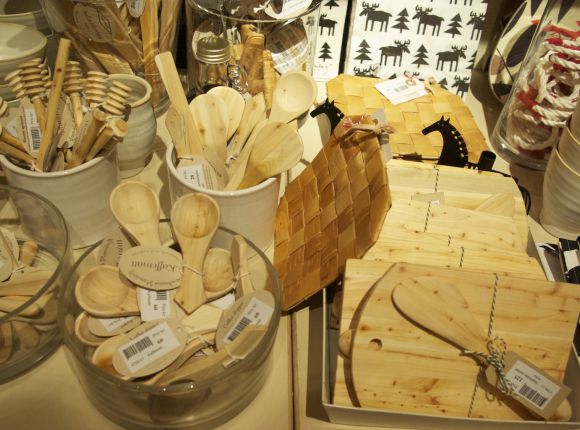
Wooden handcrafts are a typically Swedish cultural landmark; the most commonly used softwoods for that are Birch, Pine and Spruce. Rarely, they also apply harder to find and, therefore, more expensive Pearwood, which is thicker and more difficult to work with.
Wooden kitchen utensils, such as bowls, butter knives, carving boards and cutlery, carved or shaped by hand, are relatively inexpensive and easy to find at almost any mid-size shop in Stockholm selling home decor, porcelain or cutlery. The price range is low to modest, starting from EUR 2 for a butter knife or EUR 5 for a 3-piece cutlery set, to EUR 11 for a carving board. The variety of hand-carved knifes to choose from is enormous, featuring different shapes, shades of wood and handles (flat, round or oval), made either in one piece or with small wooden plugs to hold it together.
Västerlånggatan 24
111 29 Stockholm
Telephone: +46-8-698 09 73
Opening hours: Monday - Friday: 10 am - 6 pm;
Saturday: 11 am - 4 pm; Sunday: 12 pm - 4 pm
4. Sámi Jewelry - Traditional and Unique
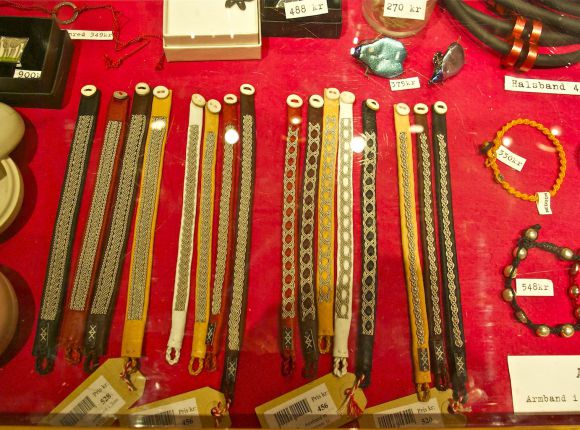
The Samí bracelets are made out of braided silver or pewter thread, placed inside and atop a flat leather string, and fastened with a small button carved out of bone. The metal threads are hard to braid, and just one inch of braiding take hours to complete. The bracelets are historically rooted in the Sámi culture, and are meant to last for life, or at least for many years until the leather wears out and needs to be changed. The leather comes from Caribou (Reindeer) and so does the button, carved out of Caribou antler. The patterns are single, double or quadruple rows of thread, sometimes with miniature knots or pearls of metal. There is a full range of sizes, and the bracelets can be wide or narrow in style. Price vary within the EUR 40-55 range.
Västerlånggatan 24
111 29 Stockholm
Telephone: +46-8-698 09 73
Opening hours: Monday - Friday: 10 am - 6 pm;
Saturday: 11 am - 4 pm; Sunday: 12 pm - 4 pm
5. Dalecarlian Horse - Possibly Best-Known Red Horse in the World

The kurbits pattern painted on the horse is typical of Dalarna county, located in the very heart of Sweden. The original copies of Dala horses are made only in one village, Nusnäs, and are painted brick-red. Other colors, such as white or blue, although approved, are not considered traditional. In fact, the very first Dala horses produced were not colored at all, as they appeared before the brick-red paint was manufactured. The price on the horses ranges from EUR 11 for small copies (7 cm) up to EUR 42 for larger ones (17-20 cm).
Djurgårdsvägen 6-16
115 93 Stockholm
Telephone: +46851954600
Opening hours: Monday, Tuesday, Thursday - Sunday: 10 am - 5 pm;
Wednesday: 10 am - 8 pm
6. Quality Crystalware
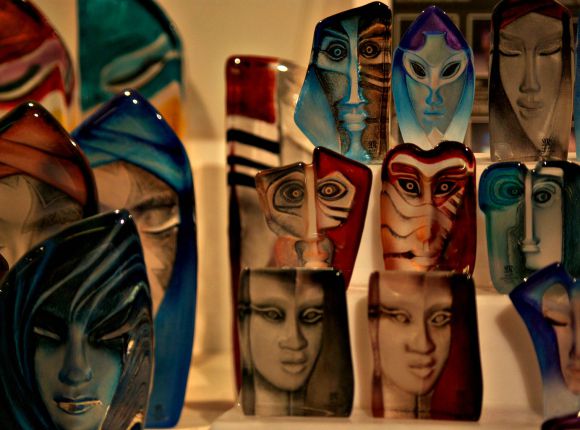
These crystal statues portrait faces of mystery and are created by the established label Mats Jonasson Målerås, the third largest maker of crystal in Sweden. The masques are named after mythological characters, such as 'Morgana', 'Dafne' and 'Batzeba'. Another world-renowned label, Kosta Boda, specializes in making superb crystal objects. Their pieces of crystal with a Dalecarlian horse inside are available in a variety of stores countrywide.
Photo: 'Masq' - limited edition crystal statues by Mats Jonasson Målerås
Prices:
Dalecarlian horse in crystal, EUR 40
Crystal mystery masque, face, EUR 100
Large massive crystal vase Kosta Boda, EUR 2-300
7. Brushes Bound by Hand - for a Greater Cause
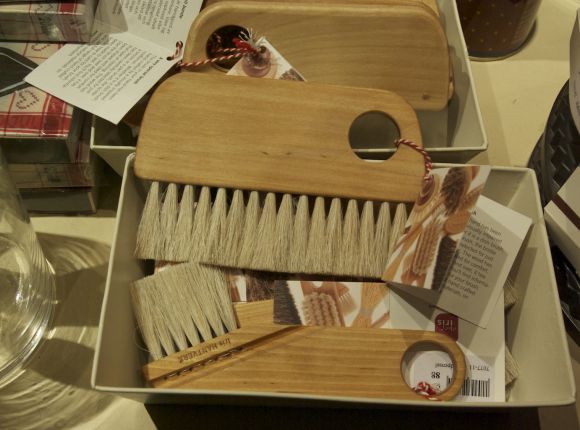
NOTE: The Iris stores also stock and sell some imported goods from France, such as soaps and lavender. Read labels on shelf.
Västerlånggatan 24
111 29 Stockholm
Telephone: +46-8-698 09 73
Opening hours: Monday - Friday: 10 am - 6 pm;
Saturday: 11 am - 4 pm; Sunday: 12 pm - 4 pm
8. Sámi Traditional Crafts - 'Duodji'
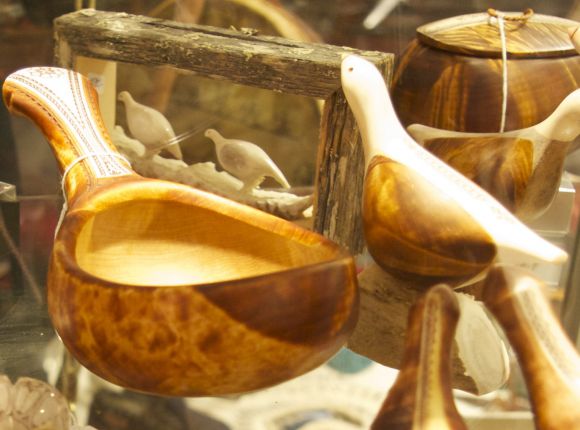
Each piece of Sámi craft takes enormous number of hours to make, be it carving out of wood or bone, processing leather all the way from skinning the animal, or braiding bracelets with silver or pewter thread (taking at least 10 hours to complete). This is why the price on each such item is very high, considering the amount of hard work involved and exclusivity of the product. A small knife with a bone handle costs EUR 500, a large knife EUR 900, and a small leather pouch EUR 200. The original Sámi handicrafts are sold by a handful of shops in Stockholm, as the artists prefer selling the work themselves, in person. You will find genuine Sámi Duodji products in these shops:
Norrlandsgatan 20
111 43 Stockholm
Telephone: +46-8-23 21 15
Opening hours: Monday - Friday: 10 am - 6 pm;
Saturday: 11 am - 4 pm
http://www.svenskhemslojd.com/
9. Wild Forest Berry Jam and Marmalade
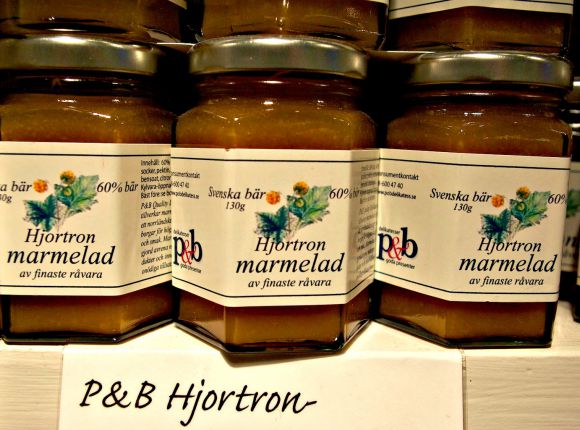
The traditional jams and marmalades in Sweden are made from wild growing Lingonberry, Blueberry and the legendary Cloudberry, known as 'the Nordic gold'. The Cloudberry only grows in the forests of the northern parts of the country, and is rather rare and hard to harvest. The harvest season is late summer to late autumn, during which you can also find the golden Chanterelle mushrooms hiding in the deep layers of dewy moss.
Lingonberry, Blueberry and Cloudberry jam is served for breakfast and used in desserts, but also as an addition to dishes made from game animals, such as moose, deer, elk and hare. The price range is modest, from EUR 4-12 where EUR 12 is charged for the more exclusive hand-decorated jars of Cloudberry. Lingonberry and Blueberry generally cost about half that of Cloudberry. The wild forest berries are also considered super-health foods, because of the high concentration of antioxidants, flavonoids and vitamins.
Hötorgshallen, Hötorget (Square)
11157 Stockholm
Opening hours: Monday - Thursday: 10 am - 7 pm; Friday: 10 am - 8 pm;
Saturday: 10 am - 5 pm
10. Wooly and Cosy Sweaters - Hand-Knitted Socks, Mittens and Cardigans
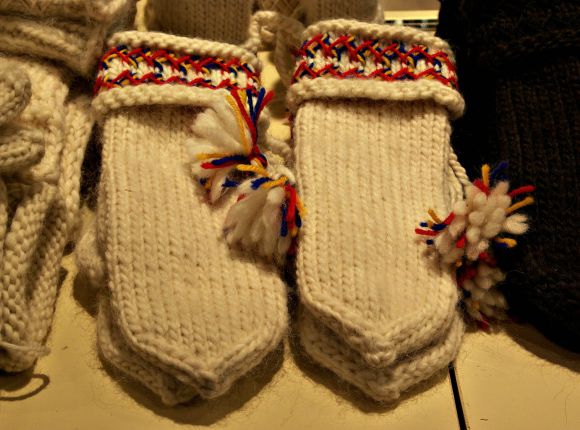
The patterns applied to knitted wool items usually involve one base color and one contrasting color, and often represent a jacquard pattern featuring stylized flowers, dots or snowflakes, diamond shapes or even outlined elks. The classic Lovikka mitten is a great example of such tradition, with the thick, off-white wool and the contrasting color lines in a simple, but striking combination.
11. Linen Woven by Hand
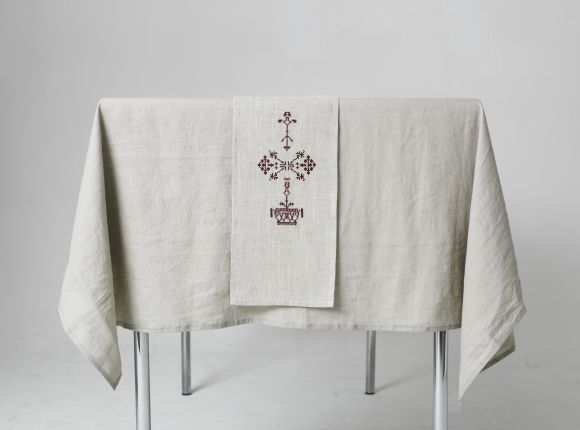
The traditional, old-fashioned linen is uncolored, or colored in plain, mild, mostly earth tones. Linen is long-lasting and robust, and often has visible threads of fiber. The history of creating fine and coarse linen fabric in Sweden goes back hundreds of years, and largely precedes the arrival of cotton in the 19th century. Prior to that, linen was the main fabric used for most weaved products, such as clothes, tapestry, bed linen, towels, pillows, napkins and other household cloths.
Today, the traditional Swedish linen is used mainly for making clothes or home decor items, such as curtains or pillows. It is usually eco-friendly and grown and processed in a sustainable way. The prices vary from medium to high. Linen clothes can be very expensive, if made completely organic and sewn by hand. Clothes range in price from EUR 50 upwards, and textiles from EUR 20 up to about EUR 100. Very large or complex items are more expensive.
Hornsgatan 68, 118 21 Stockholm, Sweden
Telephone: +468280708
Opening hours: Monday - Friday: 11 am - 6 pm;
Saturday: 11 am - 5 pm; Sunday: 12 pm - 4 pm
12. Swedish Licorice and Chocolate - the Sweet Tooth is Asking for Hand-Made Pralines
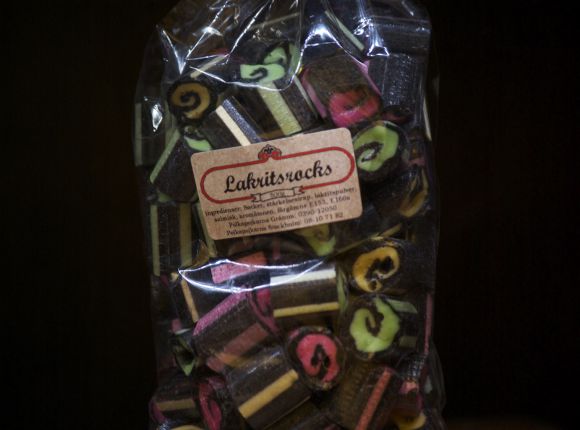
Swedish chocolate is made in small batches, decorated mostly by hand. The most common flavors include sweet almond nougat or toffee, covered in creamy, sugary milk or white chocolate, as well as more sober mixes, featuring dark, rich in cocoa chocolate that is almost bitter. The best-known Swedish chocolate brand, Marabou, produces super-sweet milk chocolate, available at any grocery store around the country. A true chocolate connoisseur, however, would not even consider it real chocolate, because of the low content of cocoa-butter. Luckily, at the Chocolate Factory, Stockholm's "chocolate paradise," one can choose from a variety of the finest quality pralines, selecting each piece separately. And whilst there, why not enjoy a cup of steaming hot cocoa to ease the decision-making process.
13. Home-Made Candy Canes - Mint White and Red Stripes
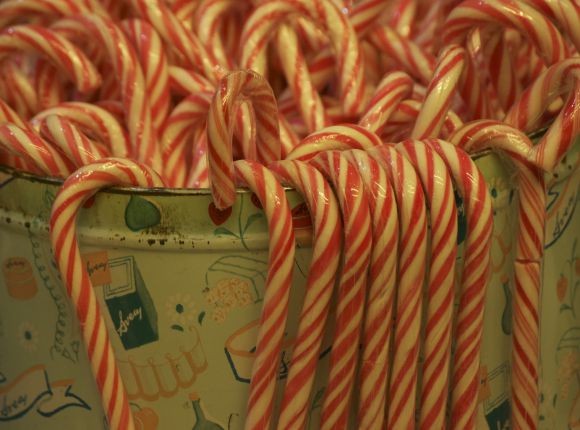
The original flavors include white peppermint and strawberry caramel, although other flavors, like licorice, raspberry and violet, are also approved. The actual candies come as round bars, the traditional shape, or as canes, caramels in a jar, or lollipops in all imaginable sizes. The normal price for a standard-size cane (80 grams) is EUR 3 and EUR 20 for 15 smaller canes (50 grams each).
Gamla Stans Polkagriskokeri AB
Lilla Nygatan 10111 28 Stockholm
Telephone +46 -8-107182
Opening hours: Daily: 10 am - 6 pm
http://www.gamlastanspolkagriskokeri.se/
14. Soft and Curly Lambskins for Fireplace

Gotland sheep are raised as free-range animals, grazing outside most of the year; their skins are processed the old farmer's way. The lamb fur is grey, curly and shiny. The most popular items on sale are whole sheepskins (ideal for rolling out in front of a fireplace), a pair of mittens with the fur-side in, or a grey-and-black patterned hand-knitted sweater made from lambswool. The prices vary from EUR 15 for a knitted hat, EUR 20-30 for a pair of fur gloves, EUR 25-45 for a curly lambskin pillow, to EUR 150-250 for a large lambskin fur.
15. Ceramics - Shiny or Matte Decor in Classic Design
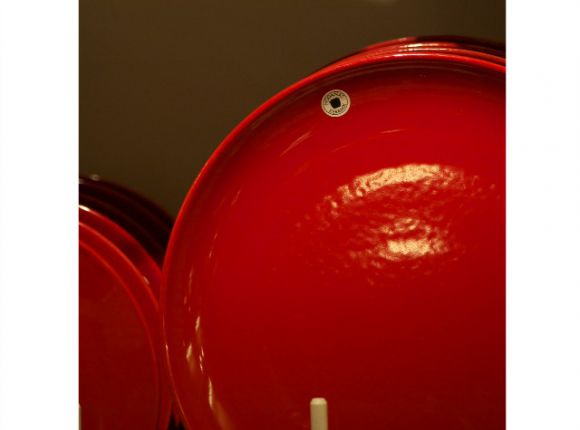
The traditional lineup of Höganäs products includes high-quality ceramic stoneware pots and plates, of which the most well known decor is the old fashioned pale gray with dark blue details, or dark, almost black brown. These ceramic items were made to last for decades and older pieces from this brand are now collectible items, often inherited from past generations. The ceramic pots and vases from the 1950s are especially desirable among ceramic collectors and antiques dealers. Prices vary between EUR 10 for small plates and EUR 16 for larger ones. Tea mugs go for EUR 10-16 with a wooden plate. Pots are EUR 30 and up.
Other Interesting Souvenirs from Sweden
If traveling to Sweden is not on your immediate agenda, or you simply can't afford an extra space in your luggage, fortunately, these days, you can find a wide selection of authentic and truly interesting Swedish souvenirs online. Presented here are some of the Swedish products sought by foreign visitors, now available online for your convenience.
2. Swedish Candies - Candies are the best of all the souvenirs from Sweden, the country known for making some of the best and most delicious sweets in the world, and cheap too. Soft and chewy gumdrops dusted with sugar, milk chocolate, or even fish candies – the choice of Nordic sweet delights is enormous. But no worries, those fish ones do taste like fruit, not fish. Get some now and share them with your friends!
3. Swedish Mustard - In keeping with the North European gastronomic tradition, the Swedes are big on mustard. They like it spicy and brown, or as a sweet sauce to drown their herring in. Either way, the Swedish mustard is a true delight for taste buds and is best enjoyed with Swedish potato sausage, yellow pea soup, and many other Scandinavian dishes.
4. Kosta Boda Glassware - Kosta Boda - one of the world's leading brands of glassware and art glass - is where technology and an understanding of glass have been refined since 1742 to produce vibrant, colorful, classic, bold, innovative and sometimes provocative glassware. Kosta Boda is a true passion! When buying a piece of Kosta Boda glass art, you are buying a piece of genuine Swedish craftsmanship and glass production history.
5. Tomte, The Gnome - A mythological character from Scandinavian folklore, Tomte (also known as “Nisse”) is a garden gnome-like creature who stands no taller than 90 cm (35 in), has a long white beard, and wears a conical/knit cap of red or other bright color. Reputed to safeguard farms, family and kids from misfortune, particularly at night, Tomte is typically associated with winter, and most notably Christmas, and as such, is regularly depicted on Christmas cards, in figurines, toys, etc. Excellent decor for home or a gift for Christmas, Valentine's Day or any other occasion.
Walking Tours in Stockholm, Sweden
Create Your Own Walk in Stockholm
Sodermalm District Walking Tour
Tour Duration: 1 Hour(s)
Travel Distance: 2.3 Km or 1.4 Miles
Old Town (Gamla Stan) Walking Tour
Tour Duration: 2 Hour(s)
Travel Distance: 2.1 Km or 1.3 Miles
The Museums Island Walk
One of the most renowned venues on the island is Scandinavia’s most popular museum,... view more
Tour Duration: 2 Hour(s)
Travel Distance: 3.3 Km or 2.1 Miles
































